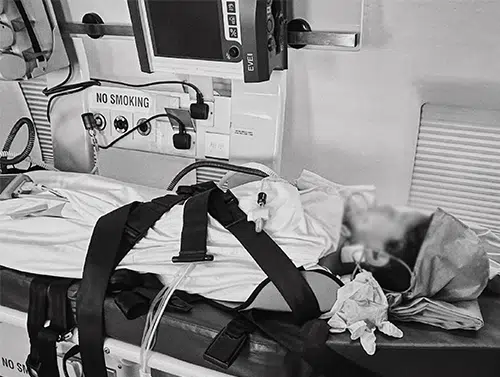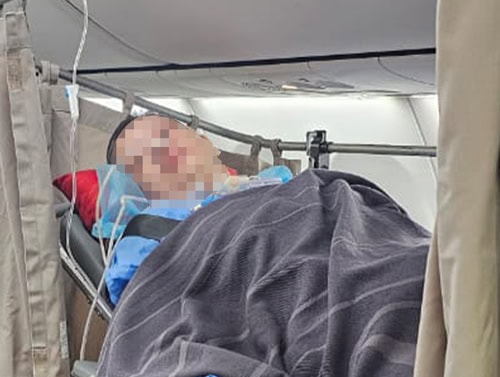The Complex Transfer of a Fragile Pediatric Heart Patient from Dubai to Delhi
A 5-year-old Emirati girl was recently diagnosed with Dilated Cardiomyopathy and presented with decompensating heart failure. Despite prompt initiation of medical management, the patient’s condition deteriorated, necessitating multiple life-saving interventions, including mechanical ventilation.
Fighting a Deteriorating Condition:
Upon admission to the ICU, mechanical ventilation was initiated due to respiratory distress and hypoxia. Inotropic support was administered to maintain cardiac output, and the patient was sedated and paralyzed to reduce metabolic demands and facilitate mechanical ventilation. However, the patient’s cardiac function continued to decline, raising concerns of further end-organ damage. The multidisciplinary team decided to transfer the patient to a specialized center with capabilities for mechanical cardiac support or cardiac transplantation.
Meticulous planning and preparation:
The preparation for transfer required meticulous planning. Since the patient’s airway was secured under anesthesia in the operating theater due to initial difficulties, special care was given to ensure the stability of the endotracheal tube. Mechanical ventilation settings were tailored to the patient’s fragile cardiac and pulmonary status, ensuring adequate tidal volumes and oxygenation while avoiding excessive lung pressures. Continuous inotropic support was provided with real-time hemodynamic monitoring, and doses of inotropes were carefully titrated to maintain optimal cardiac function. Adequate sedation and paralysis were maintained to prevent agitation and increased cardiac load. Multiple infusions, including electrolytes, anticoagulation, and nutritional support, were meticulously managed using seven syringes and infusion pumps.
Logistical and clinical challenges:
Transferring a critically ill child with multiple ongoing supports posed significant logistical and clinical challenges. Ensuring continuous and precise ventilation during transfer, maintaining stable hemodynamics with ongoing inotropic support, and managing sedation and paralysis to prevent any disruptions in the patient’s condition was critical. Additionally, ensuring all infusion pumps and monitoring equipment were operational and secure was essential.
Successful Handover:
The transfer required detailed discussions and planning with the treating team. A comprehensive transfer strategy was developed to minimize risks, and contingency plans for potential complications during transfer were prepared. The patient was successfully transferred to the cardiac transplant center with a meticulously orchestrated plan. Continuous monitoring and adjustment of all life-support systems were maintained, and a detailed handover to the receiving team, including real-time clinical data, was ensured to prevent any loss of time in the transition of care.
Conclusion:
The successful transfer of the 5-year-old girl with Dilated Cardiomyopathy and decompensating heart failure underscores the importance of meticulous planning, interdisciplinary collaboration, and precise execution in managing critically ill pediatric patients. This case highlights the critical role of detailed pre-transfer preparation and the ability to anticipate and mitigate potential complications during the transfer process
.



